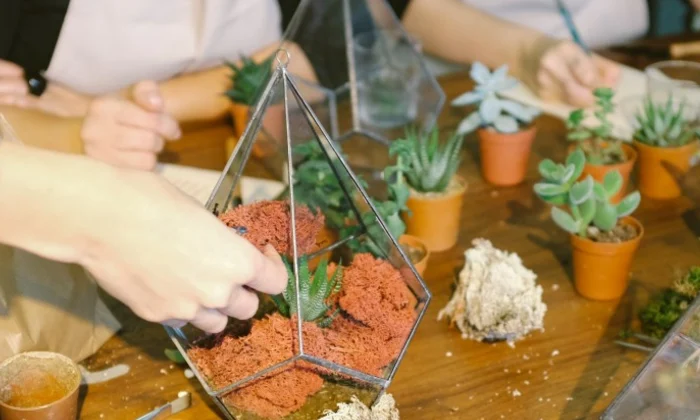Succulents are unique plants known for their ability to store water in their leaves, stems, or roots. They are perfect for gardeners who love drought-resistant plants with vivid colors and architectural forms. Combining succulents in a garden or container can create a stunning display, but it requires understanding their basic needs and how to mix different species effectively. This article will guide you through the process of combining succulents, ensuring your garden or container arrangement looks beautiful and thrives.
Understanding Succulent Basics
Before combining succulents, it’s essential to understand their basic needs. Succulents generally require:
Light: Most succulents thrive in bright, direct sunlight. However, some species can tolerate partial shade.
Temperature: They prefer warm temperatures but can tolerate cooler climates, especially during the dormant period.
Watering: Succulents need infrequent watering. They should be watered thoroughly and then allowed to dry out completely before watering again.
Soil: Well-draining soil is crucial. A mix of potting soil, organic matter like peat moss, and inorganic matter like perlite or sand works well.
Understanding these basics will help you create an environment where your succulents can thrive together.
Choosing the Right Succulents
When combining succulents, it’s important to select species that have similar care requirements. Mixing plants with vastly different needs can lead to some thriving while others struggle. Here are some popular succulent types to consider:
Agave: Known for their large, rosette-forming leaves.
Sedum: Low-growing, trailing species with colorful foliage and flowers.
Echeveria: Rosette-forming plants with thick, fleshy leaves.
Aloe: Plants with fleshy, gel-filled leaves.
Cacti: Spiny, succulent plants that come in various shapes and sizes.
When choosing succulents, consider their growth habits, size, and color to create a balanced and visually appealing arrangement.
Designing with Succulents
Designing with succulents involves more than just planting them together. Here are some tips for creating a successful succulent garden or container arrangement:
Start with a Focal Point: Choose a larger, more eye-catching succulent to serve as the focal point of your arrangement. This could be a large agave or a striking cactus.
Add Filler Plants: Use smaller, trailing species like sedum to fill in the gaps around the focal point. These plants help create a cohesive look and add texture to the arrangement.
Incorporate Accent Plants: Accent plants add interest and color to your succulent garden. Consider using species with colorful foliage or flowers, like echeveria or aloe.
Balance the Arrangement: Ensure your arrangement is balanced by varying the heights and sizes of the plants. Avoid placing all the taller plants on one side, as this will create an unbalanced look.
Use Pots and Planters Wisely: When planting succulents in containers, choose pots with drainage holes to prevent root rot. The pot size should be appropriate for the size of the plants and the number of plants you’re combining.
Maintenance and Care
Once you’ve designed your succulent garden or container arrangement, proper maintenance is key to keeping it looking its best. Here are some tips for caring for your combined succulents:
Watering: Water your succulents thoroughly, allowing the water to drain completely from the pot. Watering should be done infrequently, depending on the climate and the specific needs of the plants.
Fertilizing: Feed your succulents with a balanced, water-soluble fertilizer during the growing season. Reduce feeding during the dormant period.
Pruning: Remove dead or damaged leaves and stems to keep your plants healthy and looking their best.
Repotting: Repot your succulents every two to three years, or when they become root-bound. Choose a pot that is one size larger than the current one to give the plants more room to grow.
Conclusion
Combining succulents can create a beautiful and low-maintenance garden or container arrangement. By understanding the basic needs of succulents, choosing the right species, designing thoughtfully, and maintaining your plants properly, you can enjoy a stunning succulent display that thrives and brings joy to your space. Whether you’re a beginner or an experienced gardener, combining succulents is a rewarding way to add interest and beauty to your garden or home.
Related Topics:


